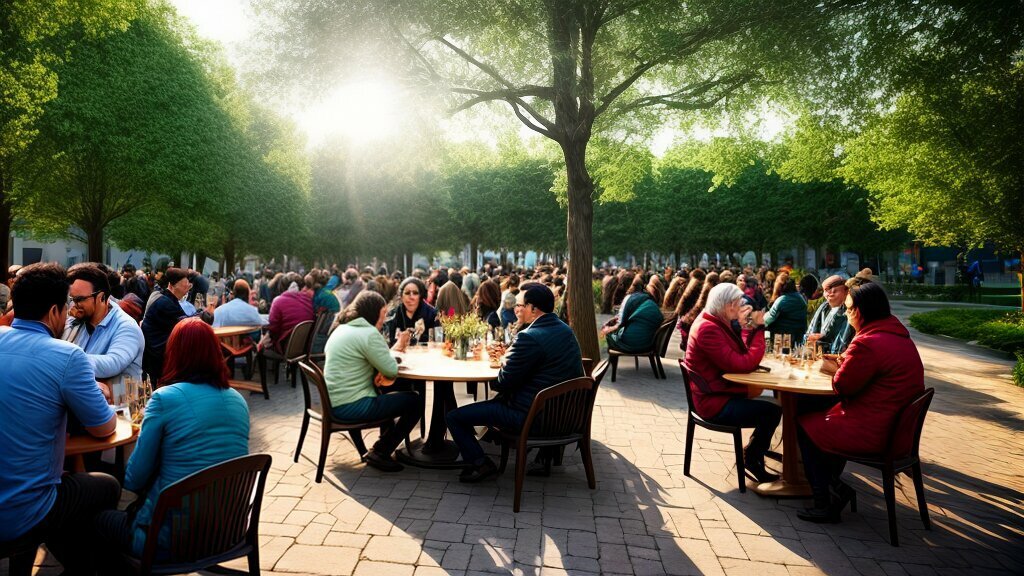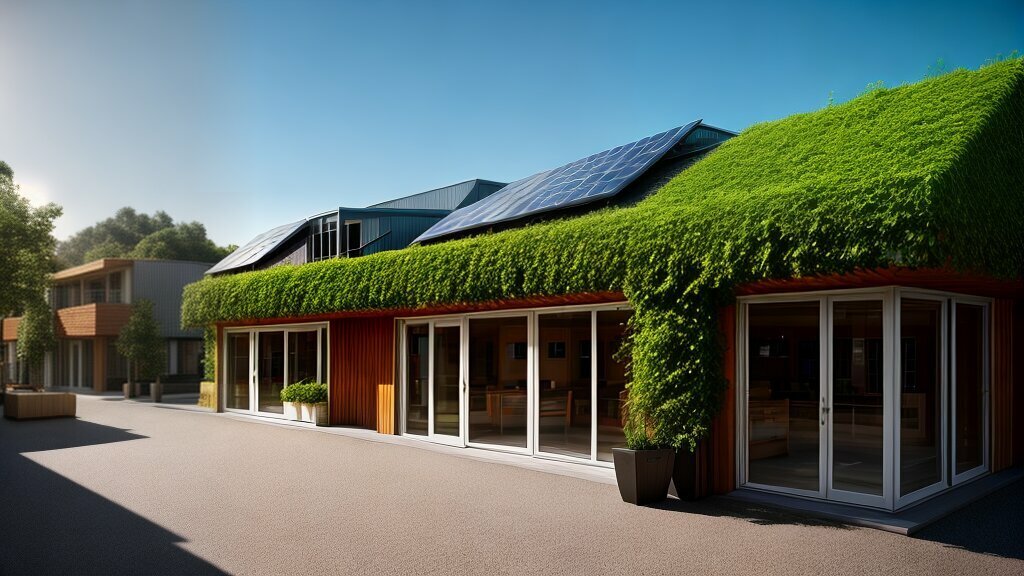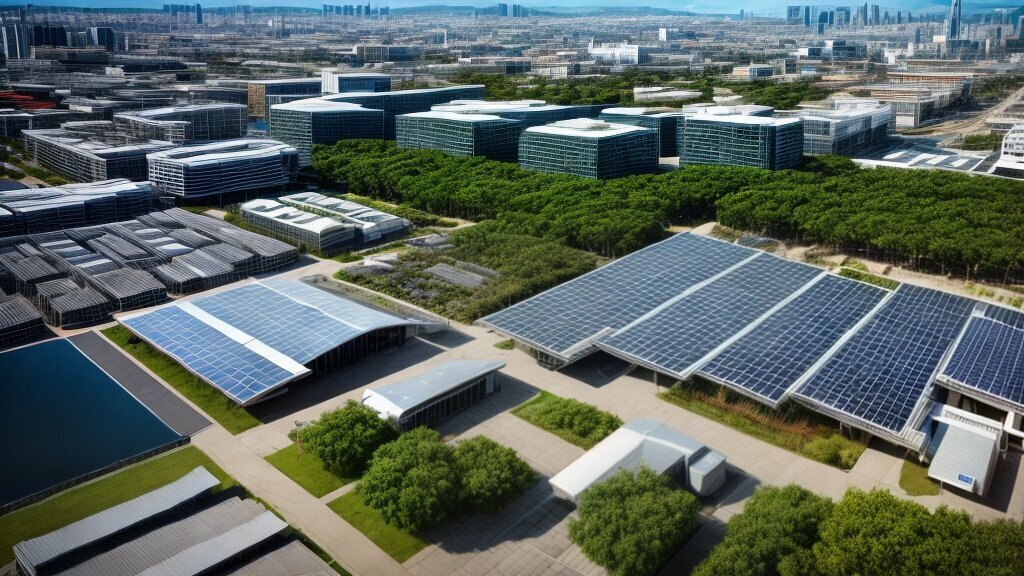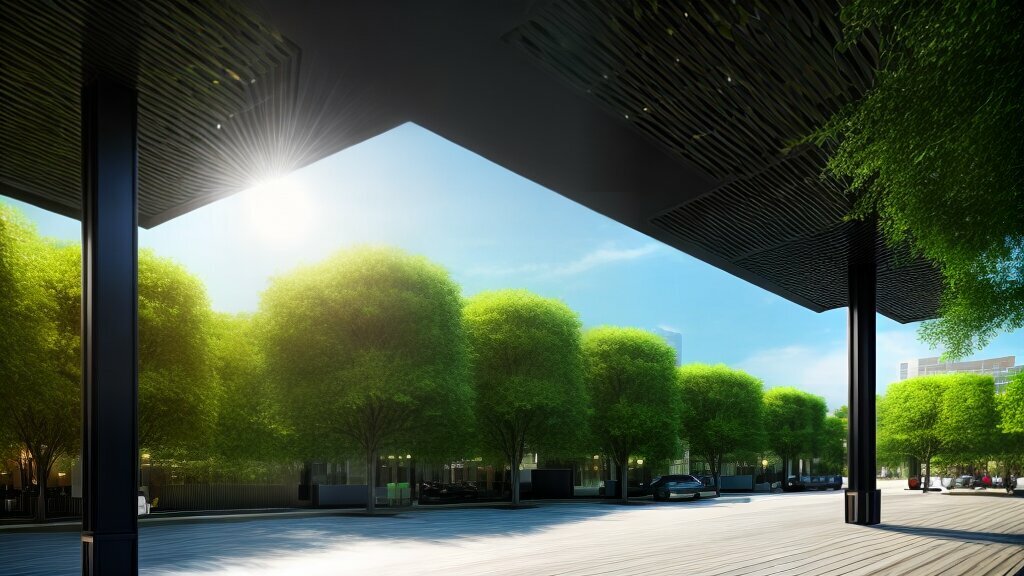Community-Centric Resilience: Architecture’s Role in Fostering Social Cohesion
Architecture plays a critical role in shaping the built environment and can greatly impact the social cohesion and resilience of communities. Community-Centric Resilience is an approach that prioritizes the needs and aspirations of individuals within a community to create sustainable and resilient architecture that fosters social cohesion.
By designing buildings and public spaces that encourage social interaction, community engagement, and a sense of belonging, architecture can contribute to the well-being of individuals and society as a whole.
Key Takeaways:
- Community-Centric Resilience prioritizes the needs and aspirations of individuals within a community to create sustainable and resilient architecture that fosters social cohesion.
- Architecture can greatly impact the social cohesion and resilience of communities by designing buildings and public spaces that encourage social interaction, community engagement, and a sense of belonging.
- The use of Community-Centric Resilience in architectural design can contribute to the well-being of individuals and society as a whole.
Building Strong Communities through Community Development
One essential component of community-centric resilience is community development. Building strong communities involves creating opportunities for residents to connect and engage with one another, fostering a sense of belonging and shared purpose. Architecture plays a vital role in this process by facilitating the creation of communal spaces that promote social interaction and support community engagement.
Architectural design can be used to create spaces that encourage social connection and facilitate community engagement. For example, multi-functional spaces that can be used for a variety of activities can promote the use of communal spaces and increase opportunities for social interaction. Additionally, buildings that are designed with the specific needs and aspirations of the community in mind can foster a sense of ownership and pride among residents.
“Community development plays a critical role in building resilient communities. It involves empowering community members to take an active role in shaping their environment and creating opportunities for social connection and engagement.”
“Architecture plays a vital role in community development by providing the physical infrastructure necessary for community engagement and social interaction.”
Community development is an ongoing process that requires ongoing engagement and collaboration between architects, community members, and other stakeholders. By prioritizing community development in architectural design, we can create spaces that promote social cohesion and support the overall well-being of our communities.

Strategies for Community Resilience
The concept of Community-Centric Resilience is built on the foundation of creating strong, sustainable, and connected communities. Architecture plays a key role in achieving this goal by employing various strategies that enhance community resilience. Below are a few strategies that can significantly contribute to the promotion of resilient communities:
Sustainable Design
Sustainable design not only reduces the environmental impact of a project, but it also promotes social, economic, and environmental resilience. Building designs that prioritize energy efficiency, renewable energy sources, and water conservation have a positive impact on the environment and the community. Such a design can conserve resources, reduce energy costs, and improve the overall quality of life.
Sustainable design also supports economic resilience by lowering operating costs for residents and businesses. By reducing utility bills and maintenance costs, residents can devote more resources to other important aspects of their lives, while businesses can invest more in their growth and development.

Multi-functional Spaces
Designing multi-functional community spaces that can be used for diverse events and activities can promote social cohesion and facilitate community engagement. These spaces can be utilized for a variety of purposes, such as community meetings, cultural events, and recreational activities. Multi-functional spaces encourage interaction and communication among community members, strengthening social bonds and fostering a sense of belonging.
Disaster Preparedness
Disaster preparedness is critical to promoting community resilience. Architecture can play a vital role in designing structures that are resilient to natural and human-made disasters. Buildings constructed with materials that can withstand floods, earthquakes, and other natural disasters can reduce the level of damage caused by such events. Additionally, disaster-prone communities can benefit from the provision of safe spaces, such as emergency shelters, where residents can take refuge in the event of a disaster.
Disaster preparedness also includes the development of emergency response plans and the provision of community education and awareness about disaster preparedness and response.
Incorporating these strategies into architectural design can contribute to the overall well-being of communities by increasing their resilience, promoting their social cohesion and enhancing their quality of life.
The Role of Community Engagement in Resilient Architecture
Community engagement plays a crucial role in creating architecture that is both resilient and socially connected. Involving residents in the design process promotes a sense of ownership and empowers them to actively contribute to their built environment. By understanding the needs and aspirations of the community, design solutions can be tailored to meet these needs and improve community resilience.
“Community engagement is not just about consultation but is rather a process that actively involves people in decision-making and problem-solving throughout the project cycle.”
Architects can employ various methods to involve the community in the design process. Workshops, focus groups, and design charrettes are effective ways to gather feedback and incorporate ideas from residents. By incorporating these ideas into the design process, the resulting architecture is more responsive to the needs of the community.
Community engagement also fosters social resilience. By working together towards a common goal, residents build stronger social connections and a sense of community. This collaboration results in a feeling of empowerment and pride in their neighbourhood.
One example of successful community engagement in architectural design is the “Design Your Neighbourhood” project in Bristol, UK. The project brought together residents, architects, and local government officials to reimagine public space in their neighbourhoods. By collaborating on the design of these spaces, residents felt a greater sense of ownership and were more likely to use and care for them.

Community engagement should be an ongoing process throughout the life of a building or public space. Regular feedback and evaluation ensure that the architecture continues to meet the needs of the community and remains resilient to future challenges.
The Role of Community Engagement in Resilient Architecture: Key Takeaways
- Community engagement promotes a sense of ownership and empowers residents to actively contribute to their built environment.
- By involving the community in the design process, architecture can better meet the needs of its users and improve community resilience.
- Community engagement fosters social resilience and a sense of community ownership.
Community-Based Approaches to Architecture
In order to promote community well-being, it is essential to adopt a community-based approach in architectural design. This approach prioritizes the needs, aspirations, and values of the community, empowering residents to actively contribute to their built environment. Successful community-based architecture requires collaboration between architects, designers, decision-makers, and community members.
One example of a community-based approach is participatory design, which involves engaging community members in the design of their own spaces. This approach helps to foster a sense of ownership and pride in the community, while also ensuring that the design is reflective of their needs and desires.
Another community-based approach is the creation of multi-functional spaces that can be used for various community activities. For example, a community centre that can serve as a space for meetings, workshops, and events. Multi-functional spaces help to promote social interaction and facilitate community engagement.

A third community-based approach is the incorporation of sustainable design principles. This involves designing buildings and spaces that are environmentally responsible and resource-efficient, and that contribute to the health and well-being of the community.
By adopting a community-based approach to architecture, designers can create spaces that are not only functional and aesthetically pleasing but that also promote community well-being and social cohesion.
Enhancing Community Cohesion through Design
Architecture plays a crucial role in fostering social cohesion within communities by creating spaces that encourage social interaction and a sense of belonging. Design elements such as public spaces, walkability, and connectivity can enhance community cohesion and promote a strong sense of community.
Public spaces are important gathering places that promote social interaction, community engagement, and a sense of ownership. When designed with community input, public spaces can serve the needs of the community and provide a platform for community events and activities. They can also serve as primary or secondary gathering places for communication and interaction between neighbours.

Walkability and connectivity are also key design elements that encourage community cohesion. Walkable neighbourhoods with interconnected streets, bike paths, and public transportation promote physical activity and a sense of community. Residents are more likely to have frequent social interactions when they walk or bike through the neighbourhood. Connectivity, including access to social support networks, emergency services, and community resources, is essential for building a sense of community and fostering resilience.
“Architecture has the capacity to elevate the experience of our everyday lives and can inspire us to connect with our communities and each other.” – Karen Nelson, CEO of New Urbanism Film Festival
Through community-based approaches, architects can empower residents to take an active role in shaping their built environment, promoting community well-being, and enhancing social cohesion. These approaches prioritize the needs and aspirations of the community and foster a strong sense of ownership. By involving the community in the design process, architects can develop a deeper understanding of the community’s needs and aspirations, create a sense of ownership and investment in the project, and build social ties with residents.
By designing spaces that encourage social interaction, connectivity, and community engagement, architects can create resilient communities that promote social cohesion and overall well-being.
The Impact of Community-Centric Resilience on Neighbourhood Well-Being
Community-Centric Resilience plays a vital role in fostering social cohesion and improving the overall well-being of neighbourhoods. By creating a supportive and resilient neighbourhood environment, individuals can experience a higher quality of life, better mental health, and increased social connectedness.
Studies have shown that communities with strong social connections and a sense of belonging have lower rates of crime and violence, improved physical health, and increased economic opportunities. Thus, investing in Community-Centric Resilience strategies can have significant long-term benefits for individuals and society as a whole.
Architectural design can contribute to the success of these strategies. Sustainable design practices, multi-functional spaces, and disaster preparedness are just a few examples of architectural strategies that can enhance community resilience.
However, it is crucial to involve the community in the design process to ensure that the architecture meets their needs. Community engagement can foster social resilience and a sense of ownership within the community, promoting the well-being of residents. Employing community-based approaches in architecture can also empower individuals to actively contribute to their built environment and promote community well-being.

Enhancing community cohesion through design is another key aspect of Community-Centric Resilience. Public spaces, walkability, and connectivity are all design elements that promote social interaction and a sense of belonging. By prioritizing these elements in architectural design, neighbourhoods can foster stronger social connections and build a sense of community.
Successful implementation of Community-Centric Resilience strategies can be seen in various architectural projects around the world. For example, the Singapore Sports Hub is a multi-use facility that serves as a hub for community activities and events. The project incorporates sustainable design practices and engages the community to promote the facility as a central gathering place for the neighbourhood.
Overall, Community-Centric Resilience is an essential approach to architecture that can significantly improve the well-being of neighbourhoods and communities. By incorporating these strategies in architectural design, we can create a more resilient, supportive, and cohesive built environment that benefits everyone.
Case Studies: Successful Implementation of Community-Centric Resilience
Community-centric resilience is not just a theoretical concept; many successful architectural projects have successfully implemented this approach to benefit communities. The following case studies highlight the positive outcomes of incorporating community-centric resilience into architectural design:
| Case Study | Location | Description |
|---|---|---|
| The Spot | Sydney, Australia | This mixed-use development project prioritized community input and engagement through design workshops and focus groups. The result was a vibrant space with shops, offices, and community facilities that fostered a sense of community pride and ownership. |
| The High Line | New York City, USA | Transforming an abandoned elevated railway into a public park, the High Line project celebrated the history and culture of the surrounding community while promoting sustainable design and ecological preservation. |
| The Borneo-Sporenburg Housing Complex | Amsterdam, Netherlands | This housing project incorporated mixed-use spaces, communal areas, and shared outdoor spaces to create a socially connected community. The design also allowed for flexibility and adaptability, promoting long-term sustainability. |
These case studies demonstrate the success of community-centric resilience in creating more than just functional architecture; they serve to enhance the social, cultural, and economic well-being of communities. Such examples show that architecture can have a profound impact on society as a whole, highlighting its potential to create lasting change for the better.

Conclusion
In today’s world, where communities face numerous challenges such as social inequality, economic instability, and climate change, it has become increasingly important to prioritize resilience in architectural design. Community-Centric Resilience, an approach that puts the community at the centre of the design process, can greatly enhance social cohesion and community engagement.
By fostering strong social connections, promoting sustainable solutions, and enhancing community well-being, architecture can contribute towards creating resilient neighbourhoods, which have a positive impact on individuals and society as a whole. The implementation of Community-Centric Resilience in architectural projects has shown successful outcomes and provides us with valuable lessons that can be applied in future projects.
Designing for Resilience: A Collaborative Effort
Designing for resilience requires a collaborative effort between architects, urban planners, community members, and other stakeholders. We must work together to create designs that reflect the aspirations and needs of the community.
Community engagement is crucial in ensuring that architecture meets the diverse needs of the community. It helps to foster a sense of ownership and pride in the neighbourhood, and encourages residents to take an active role in shaping their built environment.
It is time to shift our focus towards creating resilient communities that prioritize the well-being of their residents. By incorporating Community-Centric Resilience in architectural design, we can create spaces that promote social cohesion, enhance community engagement and contribute towards a sustainable future.
FAQ
Q: What is Community-Centric Resilience and why is it important in architecture?
A: Community-Centric Resilience refers to the concept of designing architecture that prioritizes the needs and well-being of the community it serves. It is important in architecture because it fosters social cohesion, promotes community engagement, and enhances the overall resilience of communities.
Q: How can architectural design contribute to building strong communities?
A: Architectural design can contribute to building strong communities by creating spaces that encourage social connections, facilitate community engagement, and support community development initiatives.
Q: What are some strategies for enhancing community resilience through architecture?
A: Strategies for enhancing community resilience through architecture include incorporating sustainable design principles, creating multi-functional spaces, and prioritizing disaster preparedness measures.
Q: Why is community engagement important in resilient architecture?
A: Community engagement is important in resilient architecture because it ensures that the design meets the needs and aspirations of the community. It fosters a sense of ownership and promotes social resilience within the community.
Q: What are community-based approaches in architecture and how do they promote community well-being?
A: Community-based approaches in architecture prioritize the needs and aspirations of the community, empowering residents to actively contribute to their built environment. These approaches promote community well-being by creating spaces that reflect the values and culture of the community.
Q: How can architectural design enhance community cohesion?
A: Architectural design can enhance community cohesion by incorporating design elements such as public spaces, walkability, and connectivity. These elements promote social interaction and a sense of belonging within the community.
Q: What is the impact of Community-Centric Resilience on neighbourhood well-being?
A: Community-Centric Resilience has a positive impact on neighbourhood well-being by improving quality of life, mental health, and social connectedness. A supportive and resilient neighbourhood environment contributes to the overall well-being of its residents.
Q: Can you provide examples of successful implementation of Community-Centric Resilience in architecture?
A: Yes, there are several case studies that showcase successful implementation of Community-Centric Resilience in architectural projects. These examples demonstrate the positive outcomes and lessons learned from incorporating resilience principles into design.








